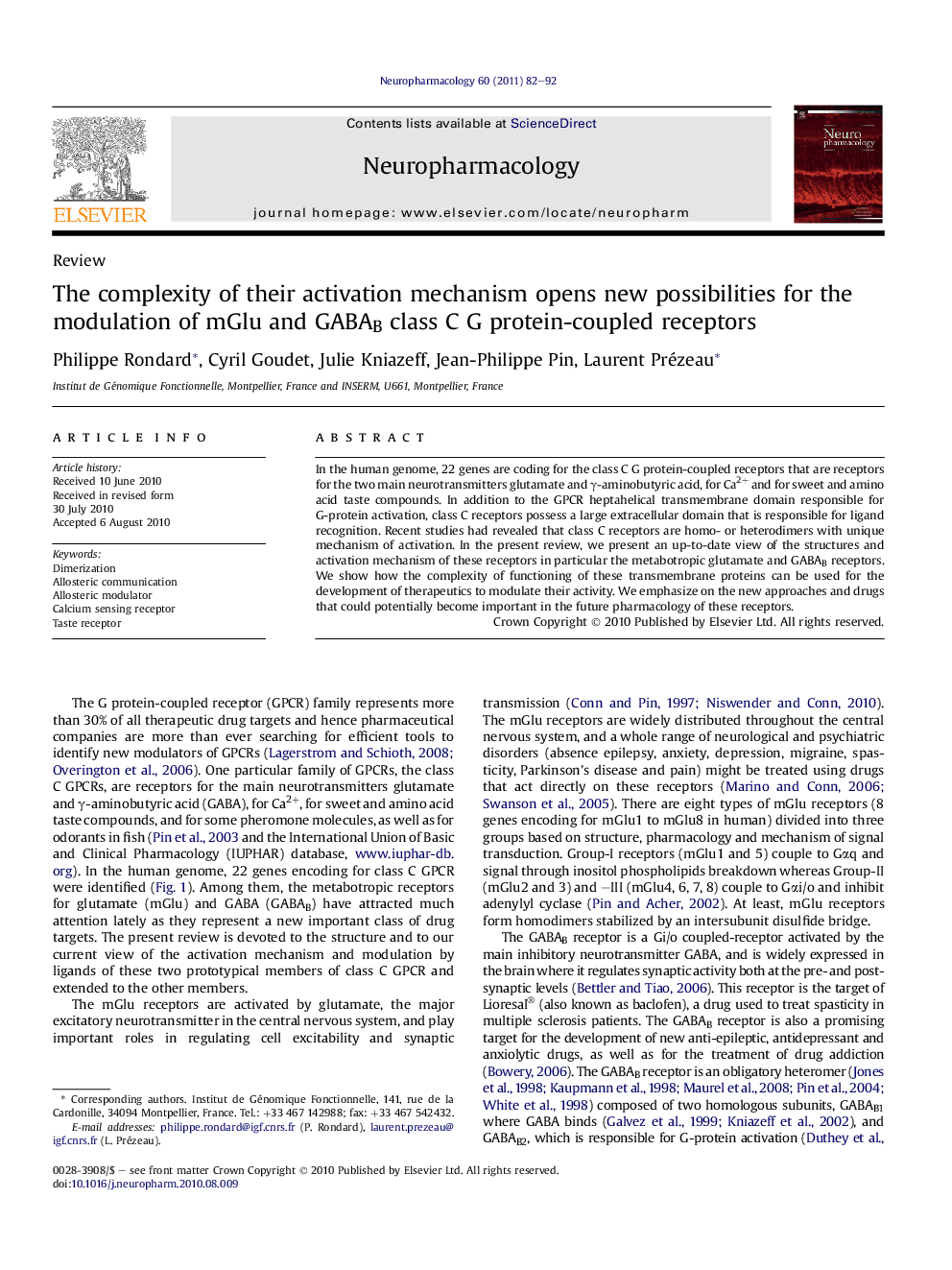| Article ID | Journal | Published Year | Pages | File Type |
|---|---|---|---|---|
| 2493925 | Neuropharmacology | 2011 | 11 Pages |
In the human genome, 22 genes are coding for the class C G protein-coupled receptors that are receptors for the two main neurotransmitters glutamate and γ-aminobutyric acid, for Ca2+ and for sweet and amino acid taste compounds. In addition to the GPCR heptahelical transmembrane domain responsible for G-protein activation, class C receptors possess a large extracellular domain that is responsible for ligand recognition. Recent studies had revealed that class C receptors are homo- or heterodimers with unique mechanism of activation. In the present review, we present an up-to-date view of the structures and activation mechanism of these receptors in particular the metabotropic glutamate and GABAB receptors. We show how the complexity of functioning of these transmembrane proteins can be used for the development of therapeutics to modulate their activity. We emphasize on the new approaches and drugs that could potentially become important in the future pharmacology of these receptors.
